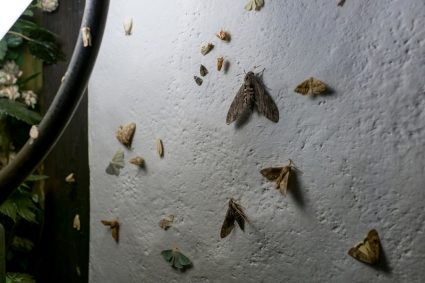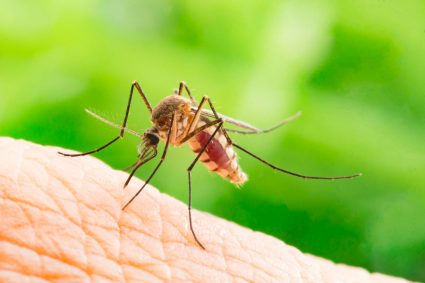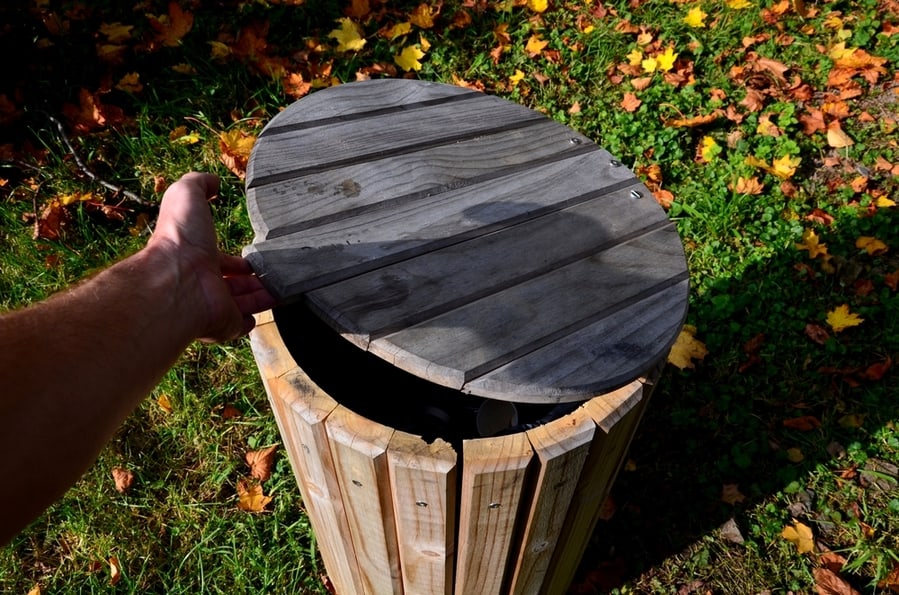
Pests like bees may be beneficial during flower pollination, but their sting and buzz are what you should avoid in your garden.
The sting of bees can cause redness, irritation, and even infection in the worst cases.
Trash cans will normally have nasty smells favored by most pests, bees included. This is why you would usually see these pests flying and lurking around your garden’s trash cans.
And even though you don’t spend that much time around garbage cans, you should perform preventive measures and keep the bees away.
The following are practical ways to keep bees out of trash cans:
- Close your garbage cans.
- Use ammonia or store-bought repellents.
- Set up motion detectors.
- Rinse cans before throwing them away.
- Set up bee traps.
From simply closing trash cans to setting up traps, there are effective yet basic ways to protect your backyard from a bee infestation. Let’s dig in.
Five Ways To Get Rid of Bees From Your Trash Cans
If bees aren’t busy making honey or pollinating flowers, you can expect them to find food elsewhere, even in your trash cans.
Because these cans are dirty and have different smells, you should ensure they are kept clean and empty daily.
The following are ways to get rid of bees from your trash cans:
1. Close Your Garbage Cans

The first thing you should do is get garbage cans with covers or lids. When you leave the bins open in your backyard, it’s easier for pests like bees to come near and fly through the insides of your trash cans.
Today, it’s easy to find a trash can with a lid in markets or malls. But you can also improvise the lid and create it out of wood if you want to save money.
If no lids are available or you can’t make one, another option is to place your garbage in a sealed plastic before placing them in the bin.
Aside from getting covers for your garbage cans, it’s also important that you seal holes and gaps in your bins.
Remember that bees are tiny pests, so they can easily enter your bins through the tiniest holes. You can use sealants, epoxy glue, or fiberglass reinforcement tape to seal cracks right away.
However, if you notice your bins having extensive damage which cannot be sealed with normal tapes and glues, maybe it’s time to replace them.
2. Use Ammonia or Store-Bought Repellents

Triggering the bees’ sensitive sense of smell is also a smart way to ward them off.
Ammonia is one of the best chemicals to trigger the bees, making them want to stay away from your trash cans. Spray the chemical around the interior and exterior of the bin.
Most pests, like bees, wasps, and even raccoons, mistake ammonia for urine. It discourages them from going near your bins.
Another way to trigger their sense of smell is by using store-bought repellents. Not only do these products contain strong and intense scents, but they also contain toxic substances harmful to bees.
Like ammonia, you can use the repellent and spray the insides and exteriors of the bin. The strong smell will definitely keep the bees and wasps away.
It’s also possible to use store-bought repellents in granular or powder form. You can sprinkle some around the bin’s bottom base and let the smell spread through your backyard.
3. Set Up Motion Detectors

If you’re willing to spend more, it’s also advisable to set up motion detectors around the perimeter of your bins.
They can be in the form of lights, which are perfect for bees, wasps, and other nocturnal animals who love lurking in your garden.
At night, when no one is in your garden, motion-activated lights will automatically switch on when they detect movements from nocturnal pests.
Another advantage of setting up motion-activated lights is added safety. Aside from deterring pests like bees from going near your garbage cans, the lights switch on at night when you arrive after spending the day out.
4. Rinse Cans Before Throwing Them Away
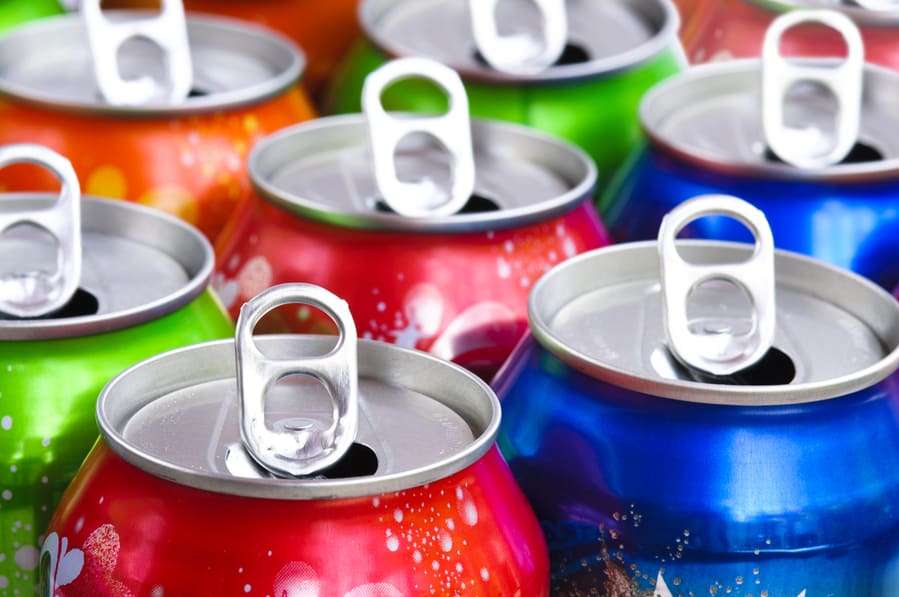
If you have empty soda cans or food containers, don’t just throw them right away. Take time to clean cans and containers before you place them inside the bins.
Don’t forget to use soap, dishwashing liquid, or bleach when cleaning them. This will discourage bees from starting an infestation near your bins.
Sustain this good practice to prevent leaks and spills inside the trash can. It minimizes the spread of dirt and smell, especially around the area of the bins.
5. Set Up Bee Traps
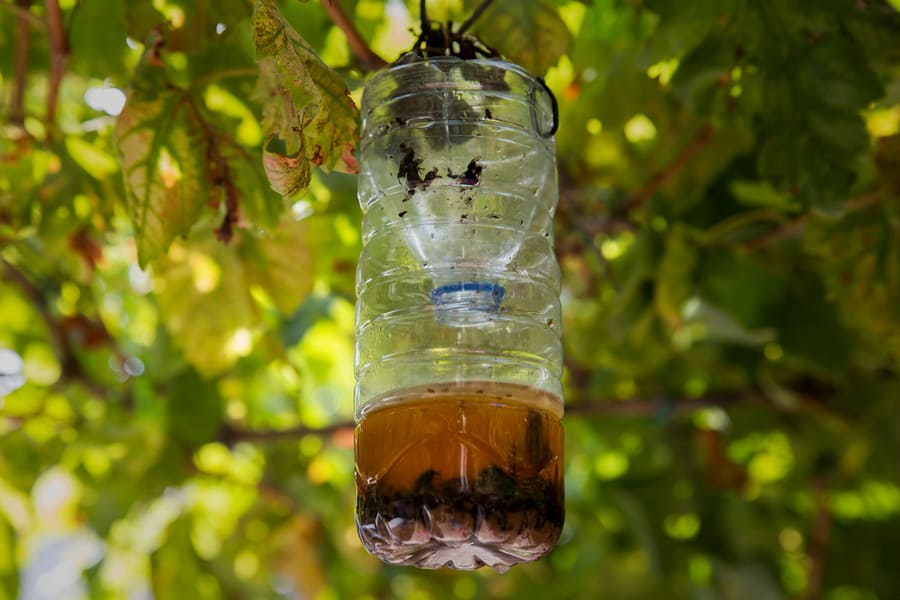
If the previous methods don’t work, try setting up bee traps. It’s easy to make one.
You only need a soda bottle, honey, and a rope to tie the trap around a tree branch.
Follow the step-by-step guide for making a DIY bee trap:
- Get a 2-liter soda bottle and cut the top off where the neck becomes straight.
- Invert the top part and place it inside the bottom part. Use a stapler or tape to attach the two parts.
- Get a rope or a cord and tie it around the bottle so you can hang it from a tree branch.
- Pour a few drops of honey or sugar into the bottle to create the bait.
- If you want the bees to be killed, add a teaspoon of detergent to the honey and stir it. This will eventually kill the bees.
Always Keep Your Bins Clean

Even though you won’t be needing the things in your bins, it’s still essential to keep them clean. That means protecting your garbage cans from pests like bees and wasps.
The next time you encounter bees in your trash cans, set up traps around the bins and cover them with durable lids.
Also, try spraying ammonia or other store-bought repellents to ward bees off the area.
Frequently Asked Questions
What Type of Bees Loves Spending Time Around Garbage Cans?
The most common type of bees that love lurking in garbage bins is the yellowjacket wasps or garbage bees. They have the scavenger habit of looking for food and a nest around trash cans.
Is Vinegar an Ideal Bee Repellent?
If the vinegar has an intense sour smell, expect bees to stay away from your bins. Pests like wasps and bees don’t like the smell of it, so you can mix it with four parts of water. Spray the mixture around the trash can.




